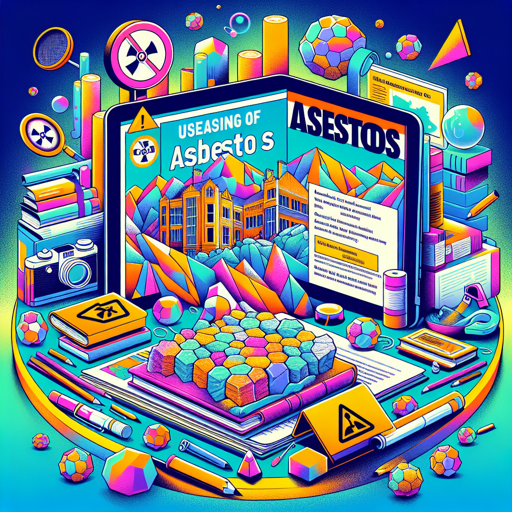Asbestos: A History of Its Usage and Ban
Unravel the intriguing chronicle of asbestos, its historical uses, and the reasons for its worldwide ban.

Asbestos: A History of Its Usage and Ban
Introduction
Asbestos, the once ‘magic mineral’ of the industrial world, has a history as layered as the mineral itself. This naturally occurring mineral has been used for thousands of years due to its unique properties of resistance to heat, fire, and electricity. However, the tide turned against asbestos when its lethal health effects were discovered, leading to a worldwide ban. This article embarks on a journey to unravel the historical uses of asbestos and the reasons for its ban.
Historical Uses of Asbestos
Asbestos use dates back to the Stone Age, where it was used for its durability and fire resistance. The Greeks, recognizing its incombustibility, named it ‘asbestos’, meaning ‘inextinguishable’. The Romans used it for tablecloths and insulation, while the Persians wove it into funeral shrouds to protect the body from evil spirits.
In the Industrial Revolution, asbestos usage boomed. Its fire-resistant properties made it ideal for insulating steam engines, boilers, and ovens. In the 20th century, it found use in a plethora of products - from car brakes and building materials to protective clothing and hairdryers.
| Era | Uses of Asbestos |
|---|---|
| Stone Age | Durability, Fire resistance |
| Ancient Greece and Rome | Tablecloths, Insulation |
| Industrial Revolution | Steam engines, Boilers, Ovens |
| 20th Century | Car brakes, Building materials, Protective clothing, Hairdryers |
The Turning Tide: Health Risks and Asbestos Ban
“Those who cannot remember the past are condemned to repeat it.” - George Santayana
These words ring true in the case of asbestos. Despite early warnings from the Roman naturalist, Pliny the Elder, about its harmful effects on lungs, these warnings were forgotten or ignored until the 20th century. The first case of asbestos-related lung disease was documented in 1924. Subsequent studies linked asbestos to lung cancer and mesothelioma, a deadly cancer of the lining of the lungs or abdomen.
The discovery of these lethal health hazards led many countries to impose strict regulations on asbestos use. In 1983, Iceland became the first country to ban all types of asbestos. Other countries followed suit, and by the early 21st century, 55 countries had banned asbestos.
Despite the bans, asbestos-related diseases continue to claim lives. According to the World Health Organization, around 125 million people worldwide are exposed to asbestos at the workplace, leading to more than 107,000 deaths annually.
External Reference
For more information on the historical usage and ban of asbestos, you can visit the World Health Organization’s factsheet on Asbestos.
Conclusion
The history of asbestos serves as a stark reminder of how a ‘magic mineral’ can turn into a global health hazard. While its unique properties made it a valuable industrial resource, its lethal health effects led to its downfall. Today, as we continue to grapple with the legacy of asbestos, it is crucial to remember the lessons it has taught us about the importance of prioritizing health over industrial convenience.